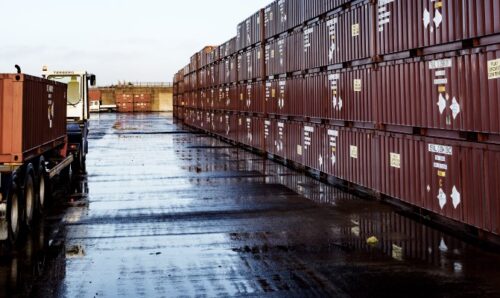Why have there not been any new nuclear builds since Sizewell B?
New nuclear 17 February 2016
It is no secret that the UK’s public opinion on nuclear power is deeply divided, with only ~ 35 % having a favourable viewpoint on atomic energy.1 This division has left our industry in a state of limbo for some time, resulting in an entire generation of plants being shut down (such as Wylfa’s MW Reactor 1) with no immediate replacement or, having their lifetimes extended far beyond the originally planned timeframe (i.e. Heysham 1 and Hartlepool’s very recent life extension to 2024).2,3 But why, when as a country the majority express a willingness to accept the need for nuclear power in our energy mix and as a vital contributor to cutting CO2 emissions, are we in this position today?1 And, why are we only now deciding to invest in new nuclear build?
One of the most recent focal points for debate on the topic of new build is the Hinkley Point C PWR reactor. Whilst the controversy extends far beyond the politics of the nuclear industry itself, one of the main overriding public concerns is the cost of new nuclear build. Sums of around £18bn4 are being thrown about, sending alarm bells ringing here, there and everywhere when we’re told day-in-day-out that the country’s deficit is unfathomably large. Granted, this is a huge initial capital expense, hence intervention by the Chinese being almost essential, however, when put into perspective, the infamous HS2 project is estimated to cost around £19bn (2014) for the London to West Midlands stretch of line alone.5
On top of the economic viability of new nuclear being called into question rests political discrepancies that have hindered new build. Sizewell B joined the national grid in 1995 just before Tony Blair swiftly took over the UK government in 1996. Somewhat understandably, his focus was set elsewhere, namely education, education, education, and so it was some 10 years later before Blair announced his backing for new nuclear build. Cue the Conservative/Lib Dem coalition taking over in 2010 with no further development on the new nuclear front. This was problematic for the development of the industry as Conservatives had previously promised private investment, whilst Liberal Democrats had stood steadfast and firmly against any new build. On the backburner once again, new nuclear build has only come into fruition with a completely Conservative government as of May last year, since then it seems we are seeing a re-renaissance in the UK’s nuclear industry.6, 7

But it isn’t simply social issues plaguing the development of the industry. The scientific community lies separated on many issues such as which way we should be taking our new build (a relatively small amount of large reactors (i.e. PWRs), or many small modular reactors (SMRs)).8 However, one of the largest elephants in the room is the undying question of what to do with our nuclear waste, which still lingers and forces the stagnation of reactor builds. Quite rightly, there is strong opposition to new nuclear build until our radioactive waste inventory has been managed and a solid plan for disposal has been implemented; especially considering the government’s adoption of an open fuel cycle. After all, why would we generate even more waste when we aren’t dealing with what we already have?9
In spite of all the controversy and disputes over the building of Hinkley Point C, it seems the UK is finally taking the first, small steps towards a new generation of reactors but whether new build be realised and in what form remains to be seen.
REFERENCES (Further Reading)
[1] W. Poortinga et al., Public Attitudes to Nuclear Power & Climate Change in Britain Two Years after the Fukushima Accident, 2013 (UKERC) [2] http://www.world-nuclear-news.org/WR-Worlds-last-operating-Magnox-reactor-closes-31121501.html [3] http://www.bbc.co.uk/news/business-35583740 [4] http://www.theguardian.com/environment/2015/oct/21/hinkley-point-reactor-costs-rise-by-2bn-as-deal-confirmed [5] https://www.gov.uk/government/uploads/system/uploads/attachment_data/file/372539/HS2-_Estimate_of_expense.pdf [6] http://www.politicsresources.net/area/uk/uktable.htm [7] http://www.theguardian.com/environment/2006/may/17/energy.business [8] http://www.theguardian.com/environment/2015/nov/24/mini-nuclear-reactors-answer-to-climate-change-crisis [9] http://www.bbc.co.uk/news/uk-england-35096566


I think that all the problems are interlinked here, the huge start up costs for nuclear are very intimidating with the financial gain being so far in the future that it’s difficult to see. This then leads to foreign investment which in turn leads to different designs being proposed which doesn’t give the nuclear industry a clear voice/message to give to the public/government which is maybe why there is such a struggle at the moment!
I totally agree Debbie but I couldn’t quite squeeze it into this article. The simple fact that as a government you may only have 4 years in charge, sinking billions of pounds into a power plant that won’t break even for years after you’re out of office is never going to be an attractive proposition and definitely won’t make you very popular with potential supporters!
What do you think the solution is, if there is one? Scrap nuclear and put all the money into renewables, fracking or just bury our head in the sand until it’s all to late maybe..?
I’m not sure about what the potential solution is but it seems the head in the sand option is currently the most attractive… I think the only viable option is a mix between renewables and nuclear but how we achieve that mix is too big of a question for me!